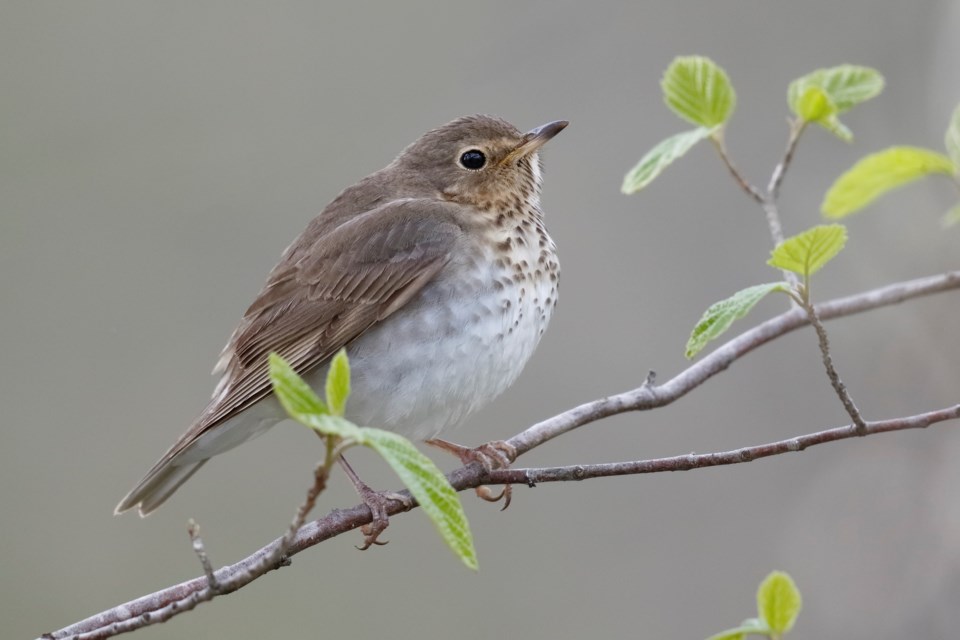By the middle of July the frenetic bird activity of the springtime is winding down. Courtship and establishing and defending a territory within which to build a nest and raise a family are now finished for another year. With these important lifetime chores completed, birdlife returns to a less animated level, as the male birds moult into their drabber alternate plumage and they cease to sing as they are no longer required to impress a female or defend a territory against other males. The drabber plumage and the silent voices become de rigeur to avoid attracting the attention of predators. In light of the above, birds become much less obvious by both sight and sound and our gardens and woods seem quiet and devoid of birds. However, given that the breeding population of birds have just raised their families, the total population should be higher at this time of the year than any other.
In mid-July there is still some residual birdsong, but even Swainson’s thrush, the ubiquitous sound of summer on the Sunshine Coast, will soon go quiet, so enjoy the last beautiful songs of this species on these summer evenings. Swainson’s thrush will sing again after the middle of May next year, after it returns from wintering in central and south America. Last week, I was out birding for two days with some visiting birders from England and I was reminded again of the huge numbers of Swainson’s thrushes that summer in our area, as their song and their location call “whit” can be heard almost everywhere. Other super-abundant summer species that can be heard continuously are warbling vireo, spotted towhee and white-crowned sparrow.
While our own summer breeding species are winding down their lives, other species are already engaging in fall migration. Many species of shorebirds are heading south from the Arctic to points south and three species of sandpiper have already appeared on the Sunshine Coast. In Porpoise Bay, ring-billed gulls have reappeared after breeding in interior BC.
There have also been some unusual species visiting the Sunshine Coast. On June 19, Cornelia Van Berkel’s feeder in ts’ukw’um was visited by a male rose-breasted grosbeak and the bird has appeared at other feeders in the Sechelt area. This is a rare species west of the Rockies. Other uncommon species to appear are an eastern kingbird at Gospel Rock (Karen Holland) and yellow-headed blackbird at the Blue Ocean golf course in Sechelt.
Between July 5 and 8, both species of pelicans were sighted on the Sunshine Coast. A white pelican relocated from Gambier Island to White Islet on the 6th and was photographed there by N. Standfield. Then, a brown pelican was sighted at the same location by John Hodges.
To report your sightings or questions contact [email protected] or 885-5539. Good Birding.



